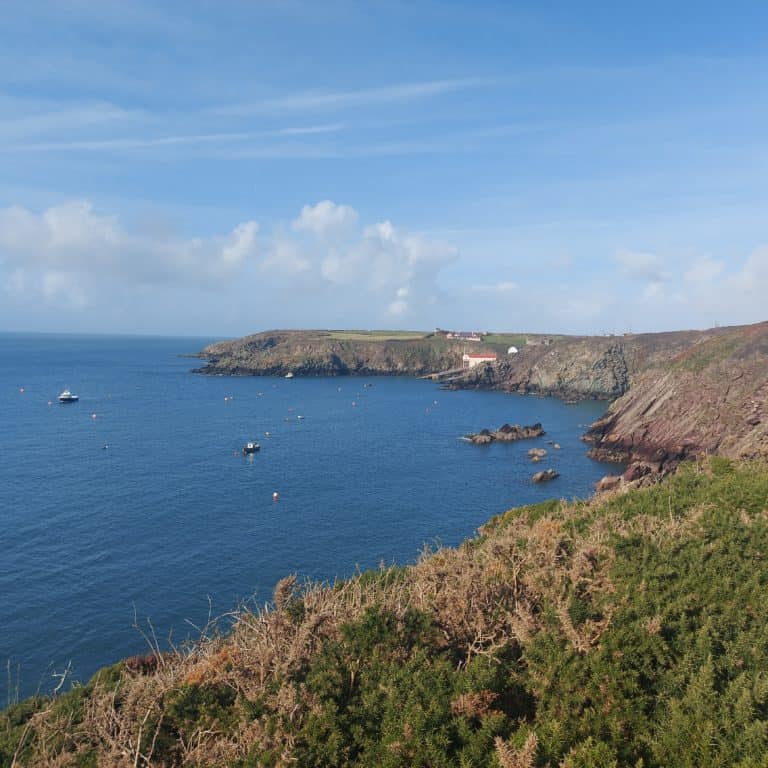Back in October half-term 2022, we asked Anna Foster from our Youth Council to join our Marine Science Camp at Dale Fort in Pembrokeshire to tell us what she thought of the experience as a keen marine biologist.
You can see Anna’s ‘A day in the life’ video capturing everything she got up to on our Marine Science Camp, but here’s a detailed account of her experience.
Marine Science Camps are just one of our experiences for young people. Find out more about our residentials, Duke of Edinburgh opportunities and more:
Day One
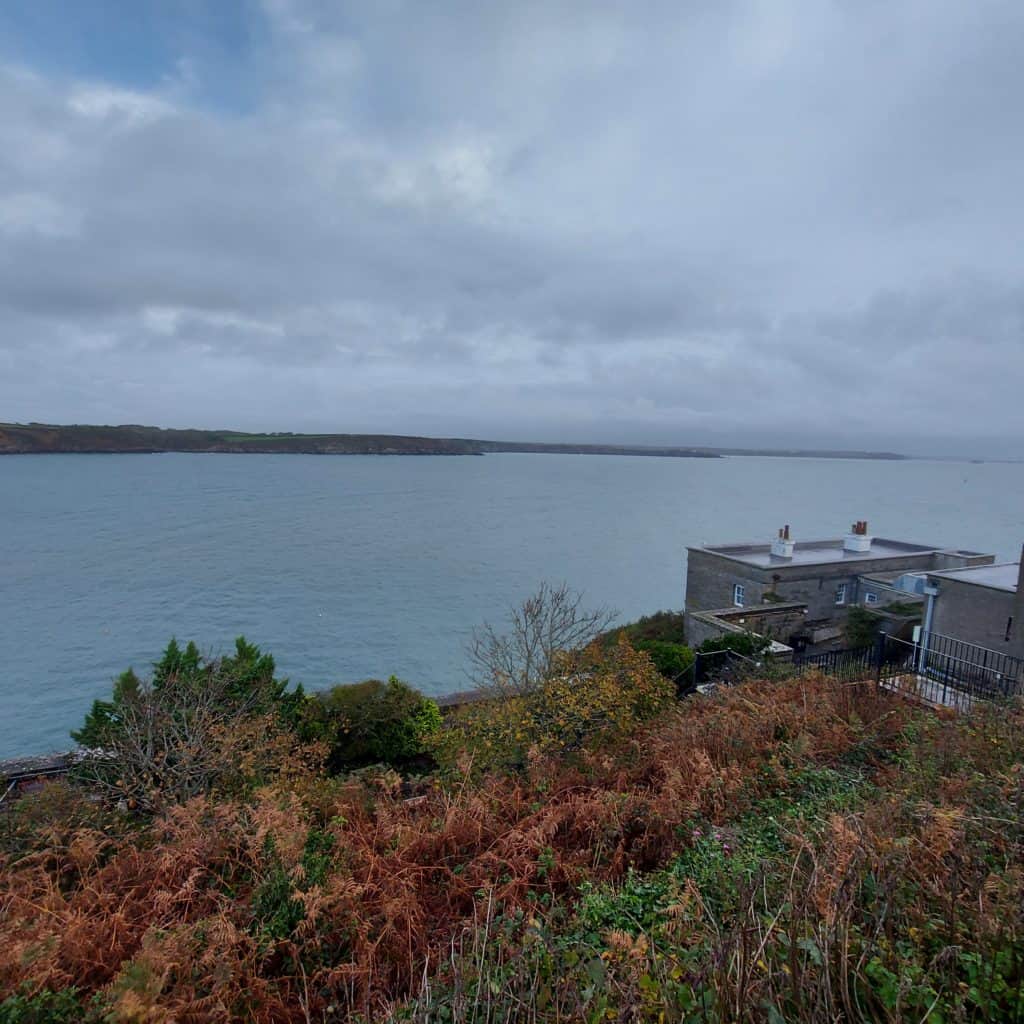
I had a rainy introduction to South Wales as I travelled to Dale Fort. Luckily, It cleared up before I arrived. I was shown to my room and looked out at the beautiful view. I had time to make my bed and get settled in before we were supposed to meet in the classroom.
I headed down to the classroom to meet everyone else. The classroom was actually a library filled with books on ecology, marine science, zoology and geography books.
Helen, the course leader, gave us a welcome talk and went through our exciting itinerary for the week.
It was then time for dinner, which was a nice opportunity to start chatting with other people on the course.
After dinner we had ice breakers, we had to go around and find out what marine experience we each had already. Who had seen a whale in the wild? Who’s been diving? Who can name 2 seabirds?
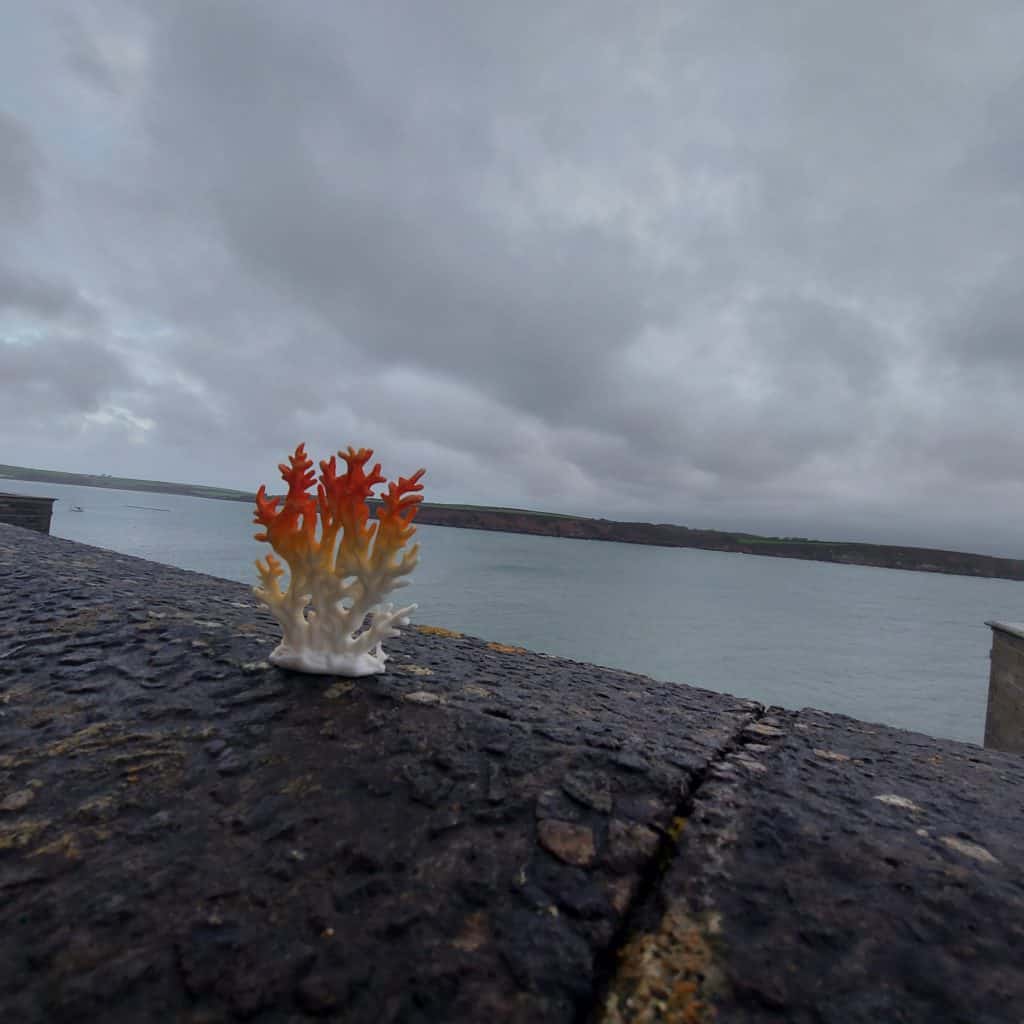
We then built marshmallow towers with spaghetti. My team did well but another group beat us by just 1 cm.
Before we left to have the evening to ourselves, Helen gave us a little marine animal to look after for the week. I got a coral and decided to name it Carla the Coral.
Afterwards we went to the common room to watch a film, our choice was Mean Girls.
Day Two
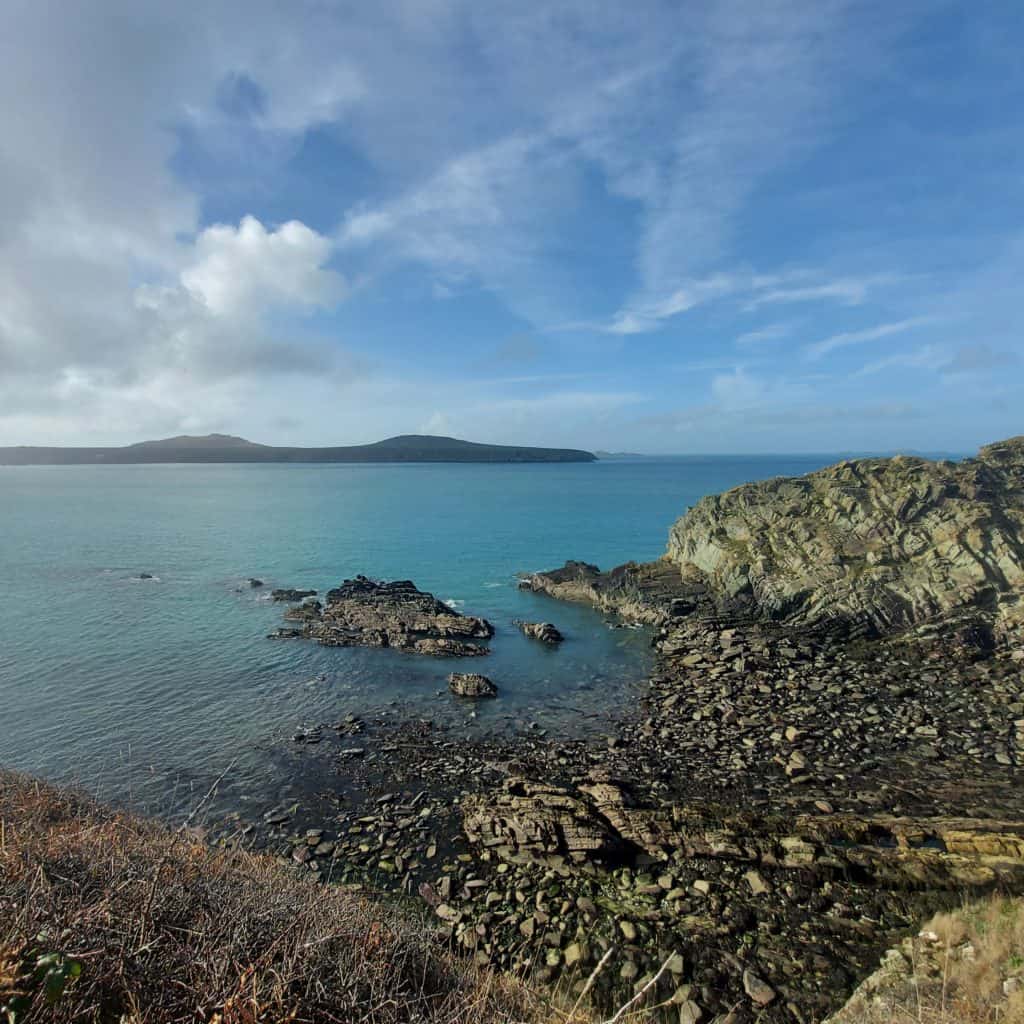
It was a very windy night, I could hear the howling of the wind alongside the soothing crash of the waves.
The view this morning was beautiful with a bit of mist hanging over the sea.
I made my lunch before going to have breakfast and getting ready for the day. Waterproof trousers and coats were a must, plus hats and scarves as it was October in Wales after all.
Before we left, we went to the classroom where Helen explained what marine mammals were found around the Pembrokeshire coast in preparation for the planned boat trip. Harbour porpoises, bottlenose dolphins and of course Atlantic grey seals were the main species. The UK population of grey seals is about 40% of the world’s population. You can see seals all around the UK but Ramsey Island is a particular hot spot, especially during pupping season from August to October.
Once we were finished in the classroom, we walked down to Dale village where our coach picked us up to take us to the RNLI station near St Davids. Most of us slept on the bus.
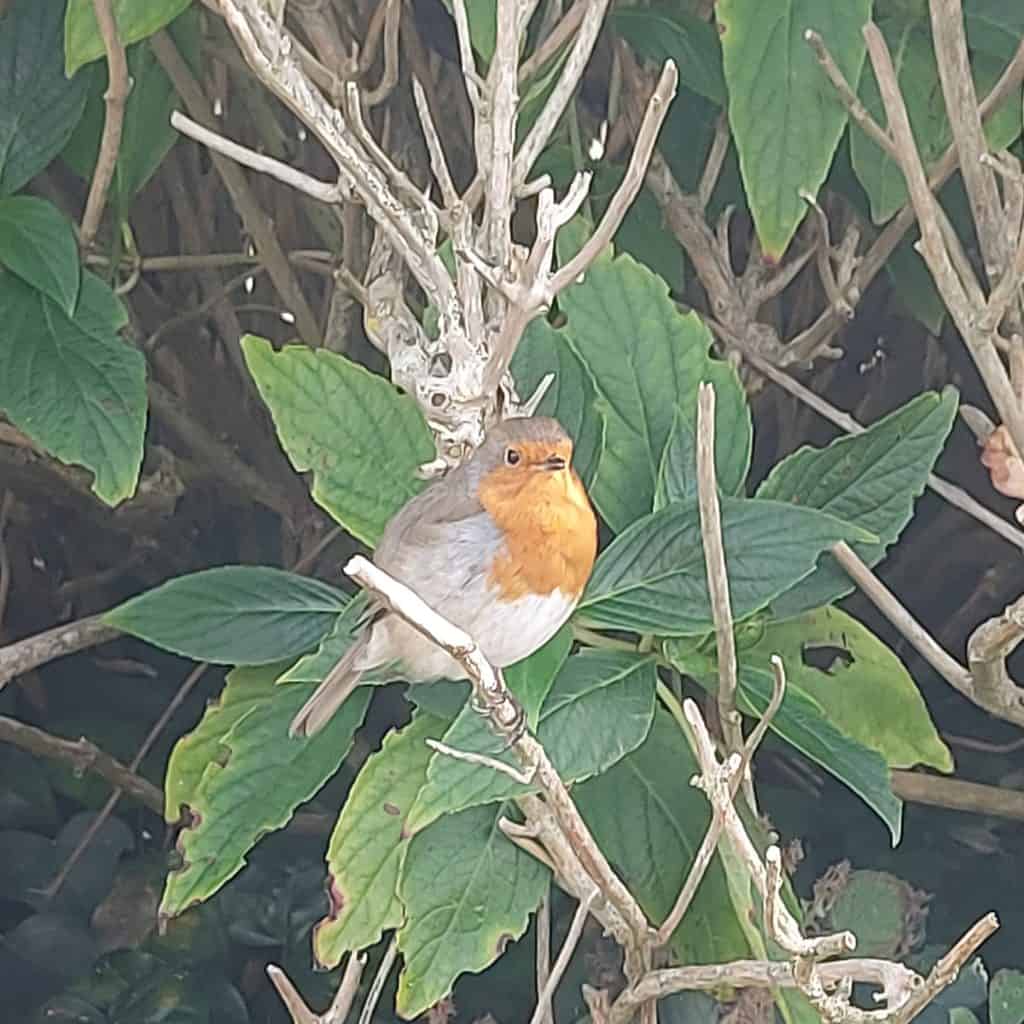
We had lunch when we arrived and the first group went on the boat trip while the rest of us relaxed, chatted and played noughts and crosses. A very friendly robin came over to say hello. It was serenading us beautifully.
We then walked along a small section of the coastal path to get views of Ramsay Island. I kept my eyes peeled for seals and porpoises. The sun was out and the water calm, perfect weather for a boat trip.
Once both groups had been on the boat we got back on the coach and returned to Dale Fort where we had some free time before going to dinner.
I went to the shop, which opens for a short period in the evening. I got myself some extra snacks because I’m always hungry and also an RSPB puffin pin. I love puffins and have been lucky enough to see them over the summer in Scotland. You can also see puffins at Skomer Island near Dale Fort, but not at this time of year.
We returned to the classroom for a talk from Mark Burton, a marine biologist that works at Skomer Island. He talked about all the British wildlife in the area from plankton to molluscs to seals and cetaceans.
It was wonderful to hear about his work and get an understanding of how biodiverse the Pembrokeshire coast and the UK coastline is as a whole.
Day Three
I woke up, got ready and made myself some sandwiches like yesterday. We had a cooked breakfast which gave me lots of energy for the day.
Once we were ready, we met in the classroom and went straight down to the jetty to take plankton samples. I had a go at using one of the plankton nets to take a sample, when they’re filled with water they’re a lot heavier than you’d expect.

When we had plenty of samples, we went back up to the fort and had a quick break before Helen gave us a talk about the different types of plankton from tiny phytoplankton to huge jellyfish.
We then took our samples up to the labs and used microscopes and dimple slides to look at them. I saw quite a few nice bits of algae and a tiny little zooplankton which was so sneaky we were never able to find it again.
Then we had lunch before walking down to Dale village. We took our wellies ready to get up close to the sea.
We went to Black Rock to search the rocky shore for crabs. My group managed to record two common shore crabs. We did see more, but they were so small we struggled to pick them up before they sneaked off.
Another group found a rather large one which was missing its claws so they named it clawless Clara.
After our crab recording we collected sediment samples for our microplastics investigation tomorrow.

It was then onto Seine netting on the beach. I volunteered to put on some waders and get in the water.
Seine nets have one edge with weights on and the other with floats, the idea is to drag it across the water with the weights scraping the floor to catch any organisms on the sea bed. We did it three times and managed to catch a few crabs, some small fish, shrimps and flat fish, It was great fun.
We walked back to the fort, some of us a bit soggy, I was lucky as my waders didn’t leak. It started raining as we walked back so I was glad I had my waterproof trousers on.
Once we were back we had an hour to get dry and warm before going back into the classroom so the Marine Biological Association could give us a talk about our membership which is included in the course.
We were each given a welcome pack that included magazines, a bandana and an octopus postcard. In the talk they told us about the history of the MBA and the research they do.
On the menu for dinner was pasta, which everyone loved, we all went up for seconds.
After dinner, Lorraine, a mentor on our course, gave us a talk about her Marine Biology career so far including her particular interest in turtles and the research opportunities she’s had so far. It was very inspiring.
Finally, we went back to the lab to prepare our microplastic samples for tomorrow, we added saline solution and shook them for a while before leaving them to stand overnight.
We had the rest of the evening to chill, me and a few of the others played uno.
Day Four
After breakfast we went to the lab to look at our microplastics sample.
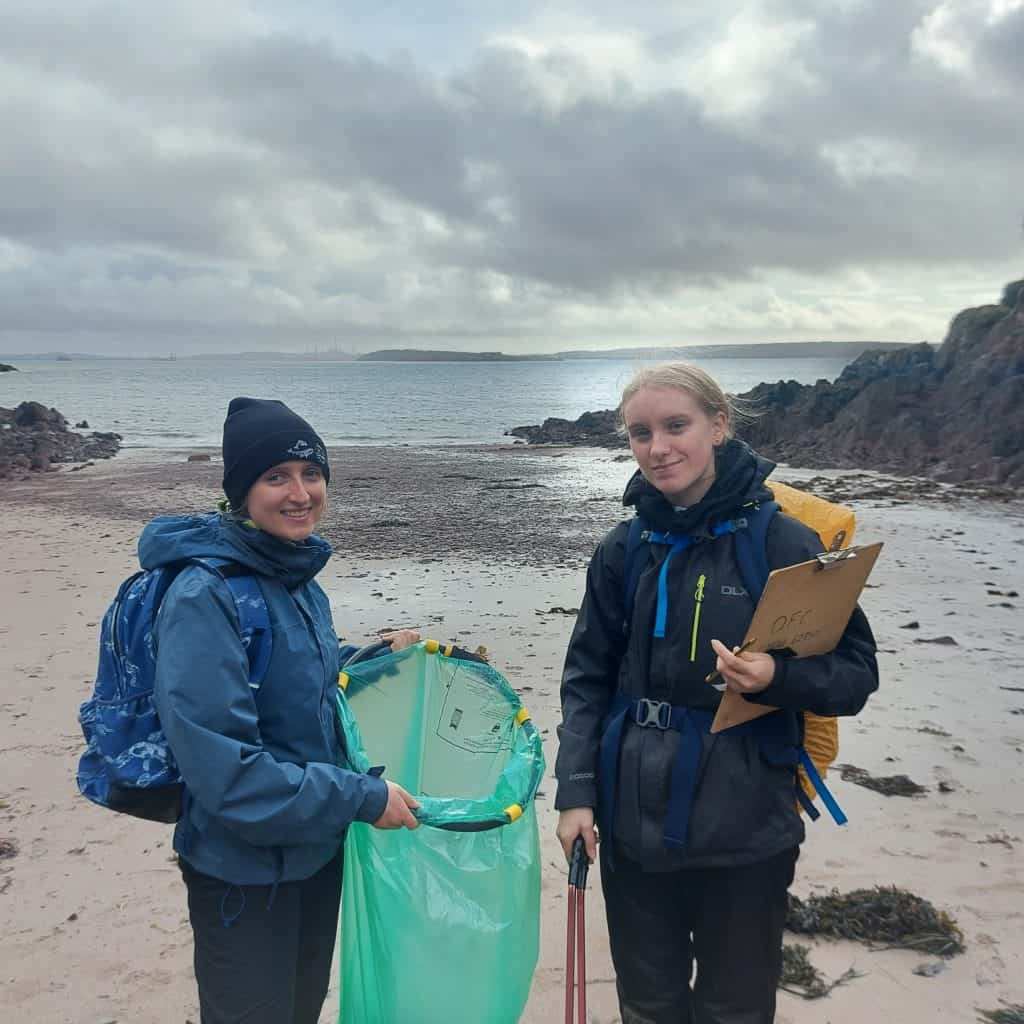
I found some fibres and fragments. After looking at plankton samples yesterday, it highlighted the impact plastics are having on our ocean.
To do something about it we went to Castle Beach to do a beach clean. It’s a very exposed shore, with winds from the South West having blown from across the Atlantic Ocean, so lots of things wash up there. We did a timed litter pick and recorded what we collected. Other than litter we saw two dead washed up Dogfish sharks, one fully grown and one tiny one. We then carried the rubbish back to the centre and went for a break. Helen did a brief introduction to rocky shores before lunch.
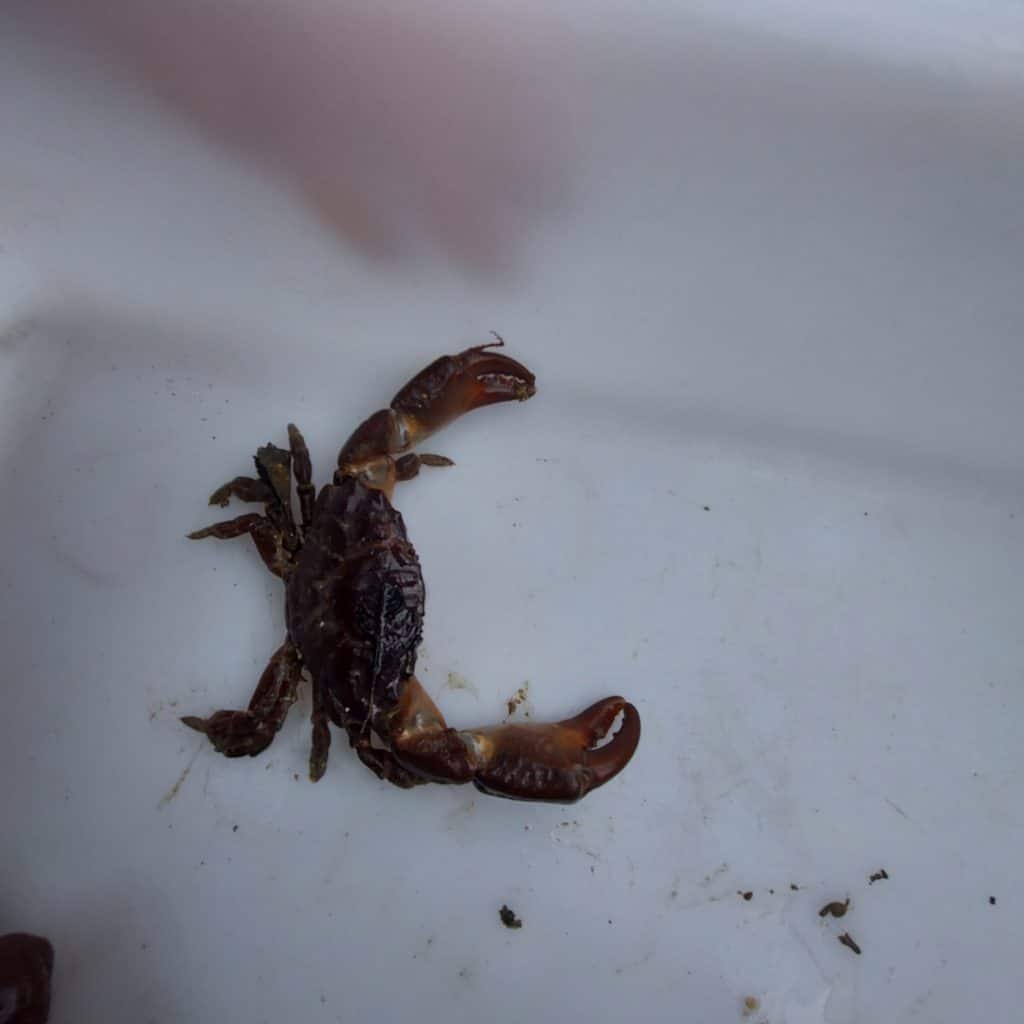
We then went down to the beach by the jetty where we took plankton samples yesterday. We had the chance to have a look around and practise IDing organisms. I found a “body builder” crab which tried to pinch us as we picked him up. We named him shark.
Then we used quadrants to sample the lower, middle and upper shore. We found the most organisms in the middle shore. Most likely because the lower shore (which we’d expected would be the most biodiverse) was often trampled.
We then went back up to the fort and into the classroom to come up with ideas for our projects. I wanted to study rock pools and Emily, one of my group members, wanted to do anemones so we decided to look at the population of snakelocks and beadlet anemones in rock pools.
We then went to dinner and had a break before doing a marine science quiz, which my team won!
Day Five
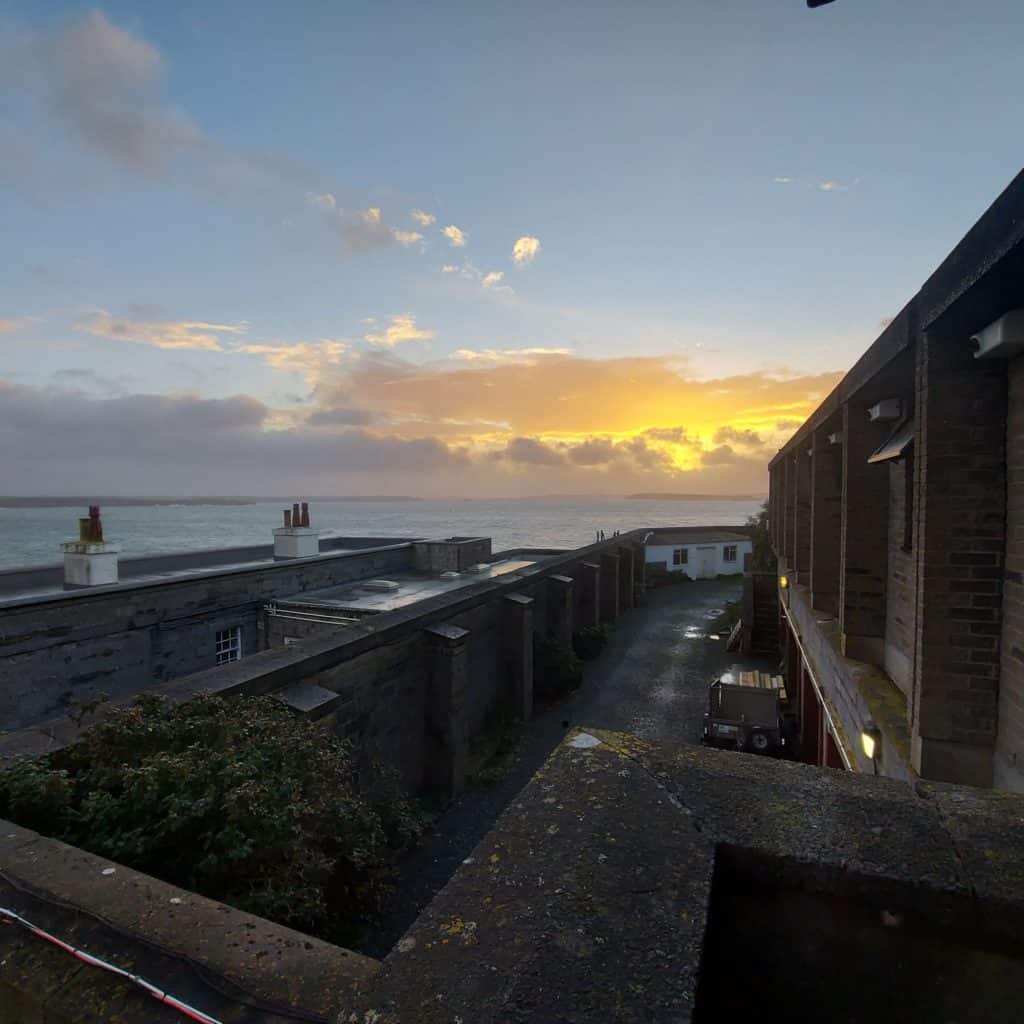
Another very windy night. As I came down the stairs to breakfast I saw a beautiful sunrise.
Once I’d had breakfast and was ready I went to the classroom where we worked on our projects.
We did some background research on beadlet and snakelock anemones. Beadlets can retract their tentacles so we thought there would be more of these outside rock pools and hence more snakelocks inside as they would outcompete beadlets in pools.
We then came up with a method and worked out how we could control our control variables. We chose a beach with the same exposure and because we couldn’t control light intensity, we decided to use a lux metre to measure it. We also had to do a risk assessment and make ethical considerations.
We then had a visit from Project Seagrass. We learnt all about their project which operated from Dale as well as other projects all around the UK.
They told us about the importance of seagrass for coastal protection, biodiversity, carbon storage and food security. It was good to hear about a restoration project as an example of conservation, it’s especially important as up to 92% of seagrass in the UK was lost over the last century.

We then did our last bit of planning before lunch and then headed out to collect our data.
My group went to Castle Beach and laid out a tape measure across the middle shore so we could collect data in roughly the same area.
We found a nice rockpool to start with and saw lots of retracted anemones which didn’t look like beadlets, turned out they were snakelocks which can rarely retract their tentacles.

We sampled 25 rock pools and saw lots of other organisms such as starfish, hermit crabs and lots of snails.
Overall we found that there were more snakelocks in rockpools. We also saw a beadlet camouflaging itself in the rocks.
We then went back to the centre and had a break before doing our data analysis. We used Chi squared and found that there was a statistically significant difference between beadlet and snakelock anemones in rock pools. There were a lot more snakelocks.
We then worked on our presentations to share our findings with the other groups.
Day 6
As this was our last morning, I woke up and packed my bag before breakfast.
It was then time for our presentations. Everyone’s projects were fascinating: species richness and the size of a rock pool, mass and width of male vs female common shore crabs, height of limpets depending on exposure, the effect of exposure on crabs, relative abundance of snakelocks and beadlets in the different shore zones of the rocky shore.
Our presentation on the population of beadlets vs snakelocks in rock pools was successful, it was a great opportunity to practise presenting scientific findings.
Then it was almost time to go! We had a look at photos we had submitted for the photo competition, some of them were brilliant, then we took a group photo before we walked down to Dale village.
We said our final goodbyes before getting on the coach to the train station or being picked up.
Written by Anna Foster, Youth Council Member, October 2022
Our Marine Science Camps are a great opportunity for young people aged between 16-25 to gain practical experience in the field, learn new skills and meet new people. They form part of the Field Studies Council Duke of Edinburgh Gold Residential offering and are always very popular.

